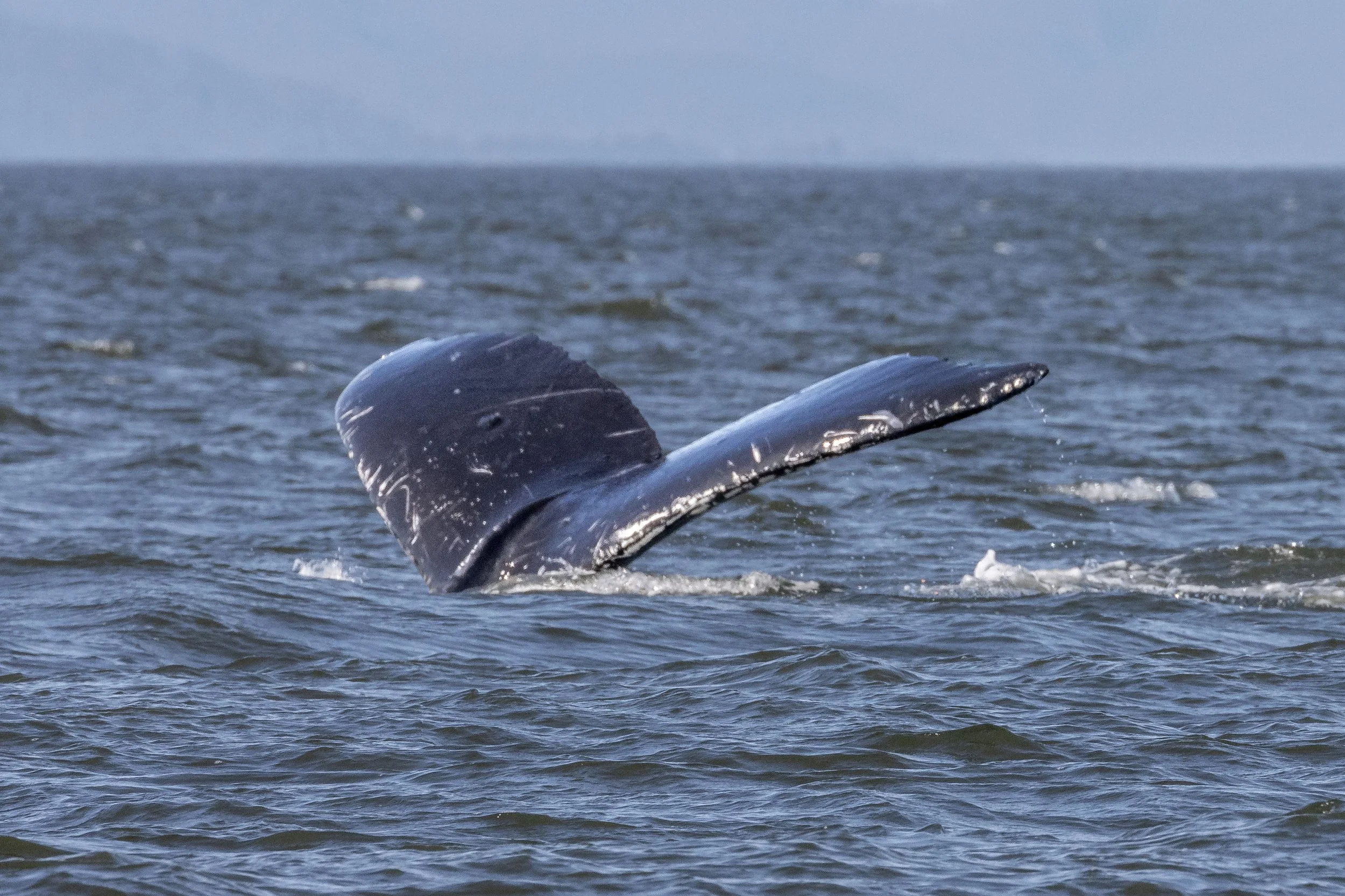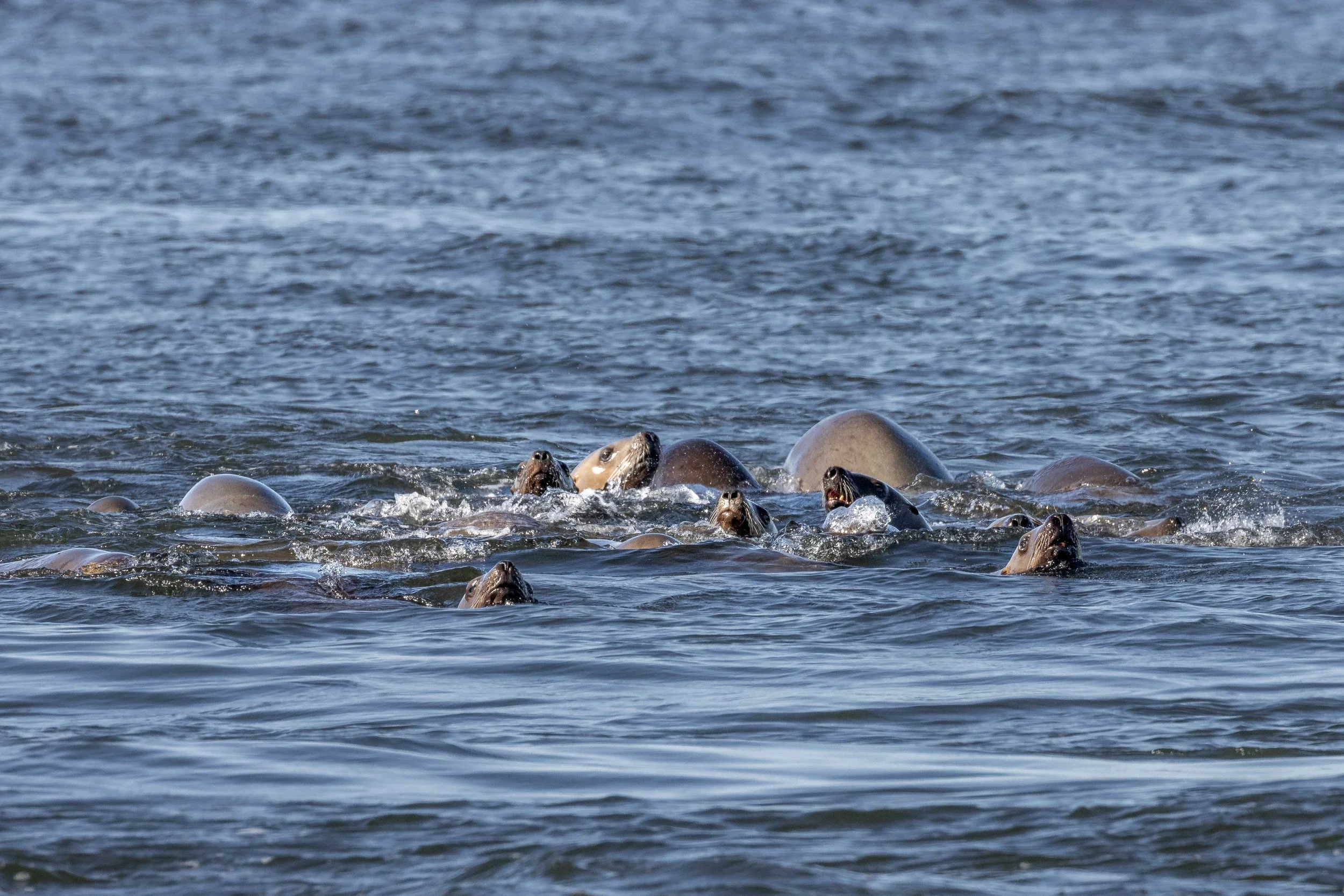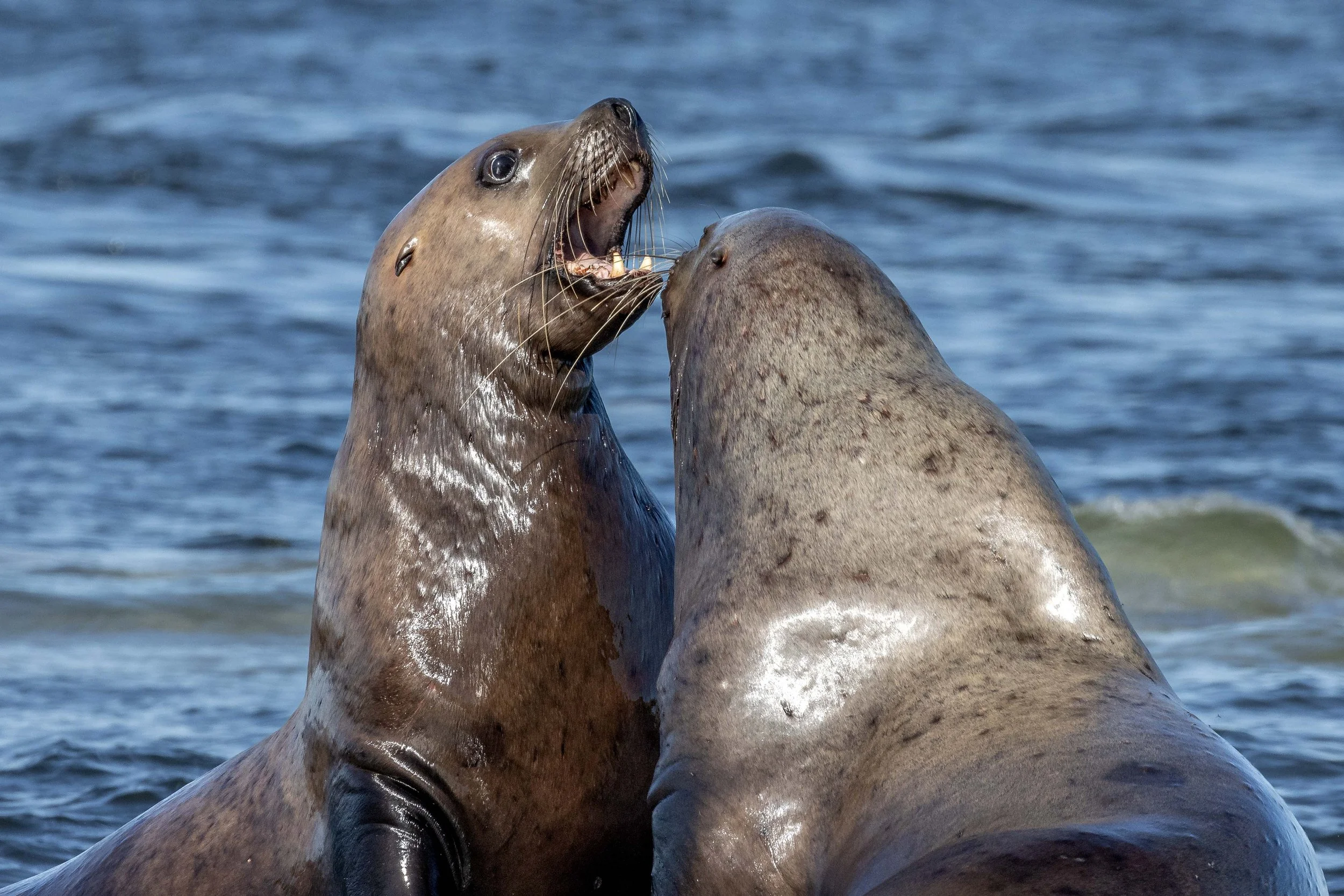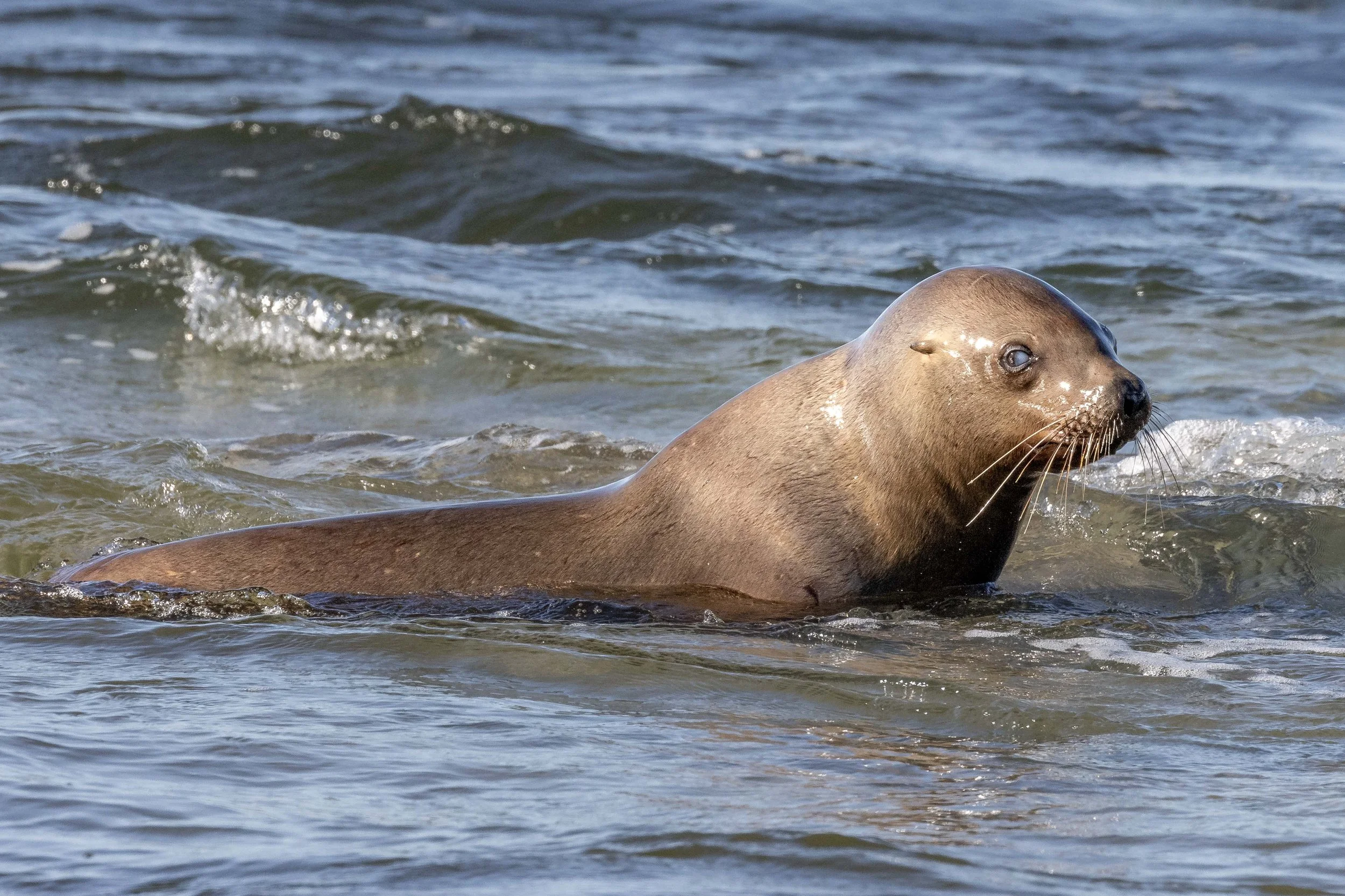June 7, 2024, 3:30pm - Calypso and a New-to-Us Humpback Associating by Valdez Island!
Hungry hungry Humpbacks! There were definitely some good eats out in the strait today, with our newly returned humpbacks taking advantage. We began our tour by heading out for the evening into the Georgia Strait. As we cruised along, rounding along Northern Gabriola and past Thrasher Rock, we began to see blows in the distance. It wasn’t long before we came across two humpbacks just East of Valdez Island. Today’s humpbacks were Calypso (BCY1226) and HW-MN0510718! While we’ve seen Calypso before, their friend is new to us. The other whale doesn’t have an official name, so we can only refer to them by their ID number. After checking them out on Happywhale, it looks like this guy was spotted last year up island, just North of Powell River. It’s always exciting to meet a new whale, so we’ll have to keep an eye out for the new guy in our part of the Salish Sea!
These two humpbacks were long divers, usually an indication that they were feeding deep underwater. This makes perfect sense at this time of year because we have some very hungry humpbacks right now! All our humpbacks have just returned from their long migration from their breeding grounds, either in Hawaii or Mexico. Humpback whales don’t eat anything on the way to the breeding grounds or at the breeding grounds, so they haven’t actually eaten since they left our waters last year. Their favourite food here is krill; small, shrimp-like creatures that hang out at about 200 meters below the surface during the daytime. How do we know krill is their favourite food? Well sometimes when they go on a dive a humpback whale will poo! We didn’t see any of that on our tour this afternoon, but their poo is red, which is the primary pigment in krill. Humpback whales were also hunted extensively between the 1860s and 1967, so researchers got a good look at the contents of their stomach. One of the researchers got to examine the stomachs of humpback whales caught in a 15-year period, and over 90% of those humpbacks were eating krill exclusively.
While most of the Humpbacks here in the Salish Sea primarily eat krill, whales up north have been documented eating small schooling fish. They have a very cool way of catching these fish with a technique we call bubble-netting! One or multiple whales will swim in a circle and release air from their blowholes (Humpback whales have two). This creates a “net” and since the fish don’t like swimming through the bubbles, it traps them. Then the Humpback swims up through the net with their mouth wide open and eat all the fish inside.
Before they start bubble netting, they grunt underwater. While they’re blowing bubbles, they’ll make a whooping sound that is specifically a bubble-net feeding call. Humpbacks around Bella Bella and North are the most likely to feed this way, but this behaviour is slowly making its way South. One of the whales that is usually found around Port McNiell went up to Bella Bella and learned this behaviour. She brought it back down to the Port McNiell area and taught it to some of the other Humpbacks around there - and we know for sure that some of our Salish Sea Humpbacks went up there as well. Since humpback whales learn from eachother, we wonder when we will start seeing bubble-netting around us!
After watching these two whales for about an hour, we headed out to go find some of our Steller Sea Lions. These guys are the biggest sea lion in the world. The females are just over 2 meters long on average and can weigh up to 600 pounds. As if that wasn’t impressive enough, male Steller Sea Lions can get to three meters long and weigh up to 2500 pounds! That’s almost double the weight of the average horse! It was also a relatively high tide, so we saw a couple of sea lions fighting over the limited space on the rocks.
All too soon it was time to head home, but we managed to sneak in a visit to the cormorants at the Gabriola Bluffs before heading back into home port.
Photos today were taken by our Marine Naturalist Val Watson.
Calypso (BCY1226)’s dorsal fin.
Calypso (BCY1226) diving.
Calypso (BCY1226)’s flukes show signs of entanglement along their top side.
HW-MN0510718 diving.
HW-MN0510718 has a very gorgeous fluke! Those little white circles are old barnacle scars.
Calypso (BCY1226) going down!
Calypso (BCY1226)’s flukes are absolutely stunning!
A raft of sea lions.
These two girls were fighting over the limited space on the rocks at high tide.
Neck jousting to see who gets the spot.
Someone has bedhead!
This poor sea lion appears to be half blind. Note the white eye.
Look at those whiskers!
Some interesting looking lesions on this female. This is from a disease known as a “poxvirus”. These won’t harm her in the long run, don’t worry!
This absolutely massive male sea lion!
An adult Bald Eagle near the bluffs.
Cormorants clinging to the rock side at the bluffs.

















